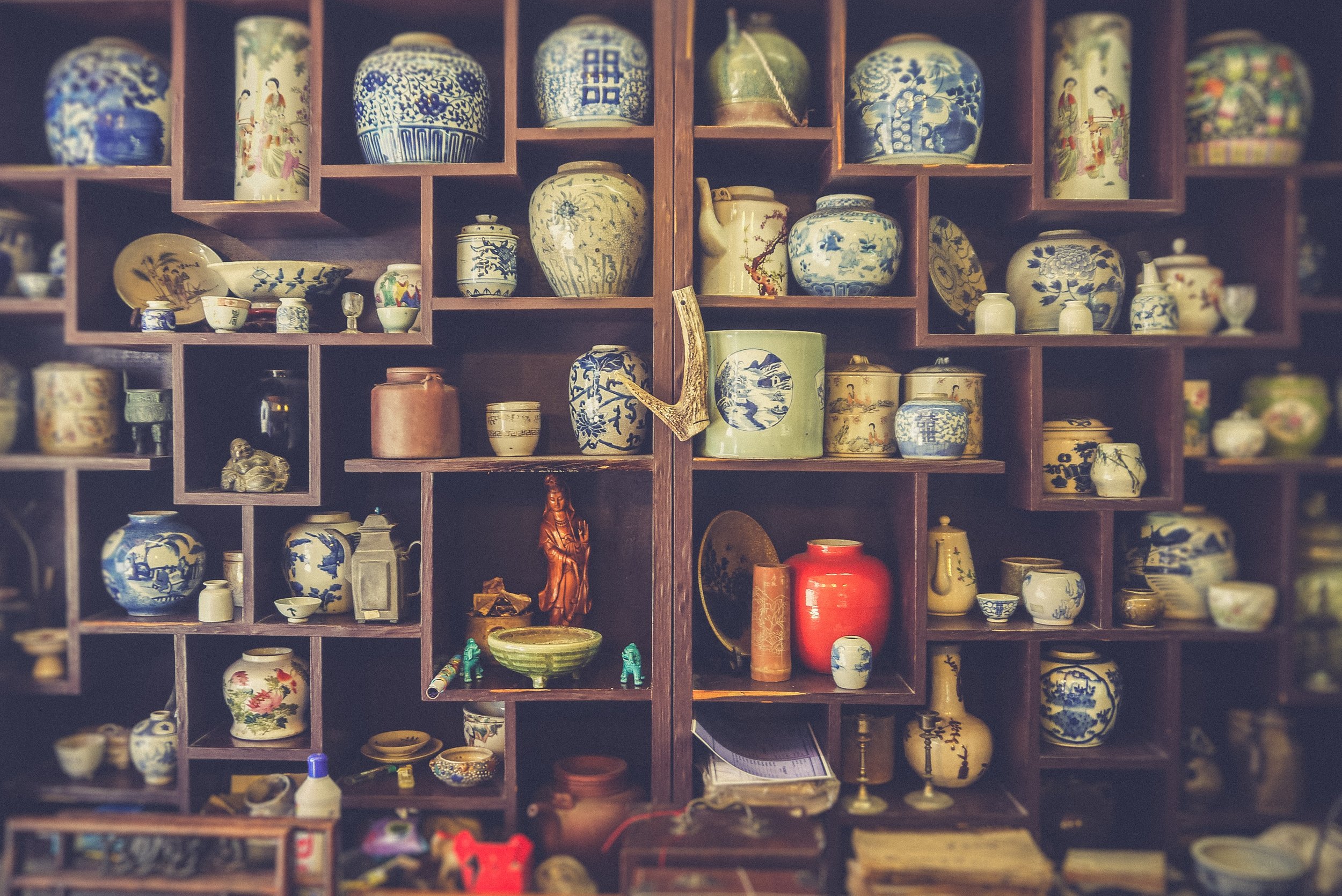One home decor trend that never goes out of style is pottery. Whether your pottery piece is an old crockpot historically used for pickling, a vase you purchased at a flea market to display your colourful bouquet of fresh flowers, or mugs used to drink your morning cup of coffee every day, pottery is timeless but also can be valuable. There are three types of pottery; earthware, porcelain and stoneware.
Pottery dates far back as 29,000 BC. The “modernized” version of pottery was introduced between 6,000 and 4,000 BC with the creation of the potter’s wheels. This new tool cut the time-consuming process of hand-molding clay and allowed for more creative pieces.
Here are ways to identify if your pottery is antique:
Coloured Marks - Colours of pottery marks will help you identify the quality of your piece. A red mark indicates the pottery was molded with high-quality clay, whereas a green mark indicates with the lowest quality clay was used to mold the pottery.
What Glaze, Finish or Decoration Was Used - Every studio and potter has a “visual signature” that is a unique style to the artist. The more familiar you become with pieces and their creation area, you will begin to recognize similar pottery pieces.
What Type of Clay Was Used - Even if there are no markings, the unfinished base of the pottery piece can reveal what type of clay was used. Historically, potters would use clay found in the area they lived, making it easy to identify where the piece originated. Today’s pottery makes it difficult to tell where it originated, with potters ordering from suppliers.
Size and Shape of the Piece - The basic form of pottery can reveal the period in which the piece originated. Also, comparing the glaze, finish and decoration with the size and shape of the pottery piece can tell you a lot about the history of the pottery piece.
Variations of Marks - It is important to examine a pottery’s base for markings. Many manufacturers and studios use different markings on their pieces. Some manufacturers even change their marks over time, which helps identify the period the pottery piece came from. Sometimes manufacturers even changed their marks to indicate a milestone event such as an anniversary or relocation of a factory.
Country Markings - If you notice the name of a country marked on the underside of a piece of pottery, that will tell you where the piece was made.
Numbers and Dates - These can be in a series that can tell you how old the pottery piece is.
Original Faux or Antique - Turn the piece over to see the bottom and check what type of clay was used. Then use a clean cloth, and wipe the bottom of the ceramic thoroughly. If it is dusty and dirty, then it is an antique. If the piece is relatively clean, then the piece is probably a faux piece.
Some collectible pottery pieces are:
Weller Pottery Van Briggle Pottery
Paul Revere Pottery Roseville Pottery
Rookwood Pottery Newcomb Pottery
Teco Pottery Grueby Pottery
George Ohr Pottery Fulper Pottery
McCoy Pottery
When in doubt, do your research online and consult with experts. It is important to identify the marks on the pottery piece correctly and to know the appearance of a real piece of pottery. Identifying pottery takes time, but it will pay off by doing your research.
